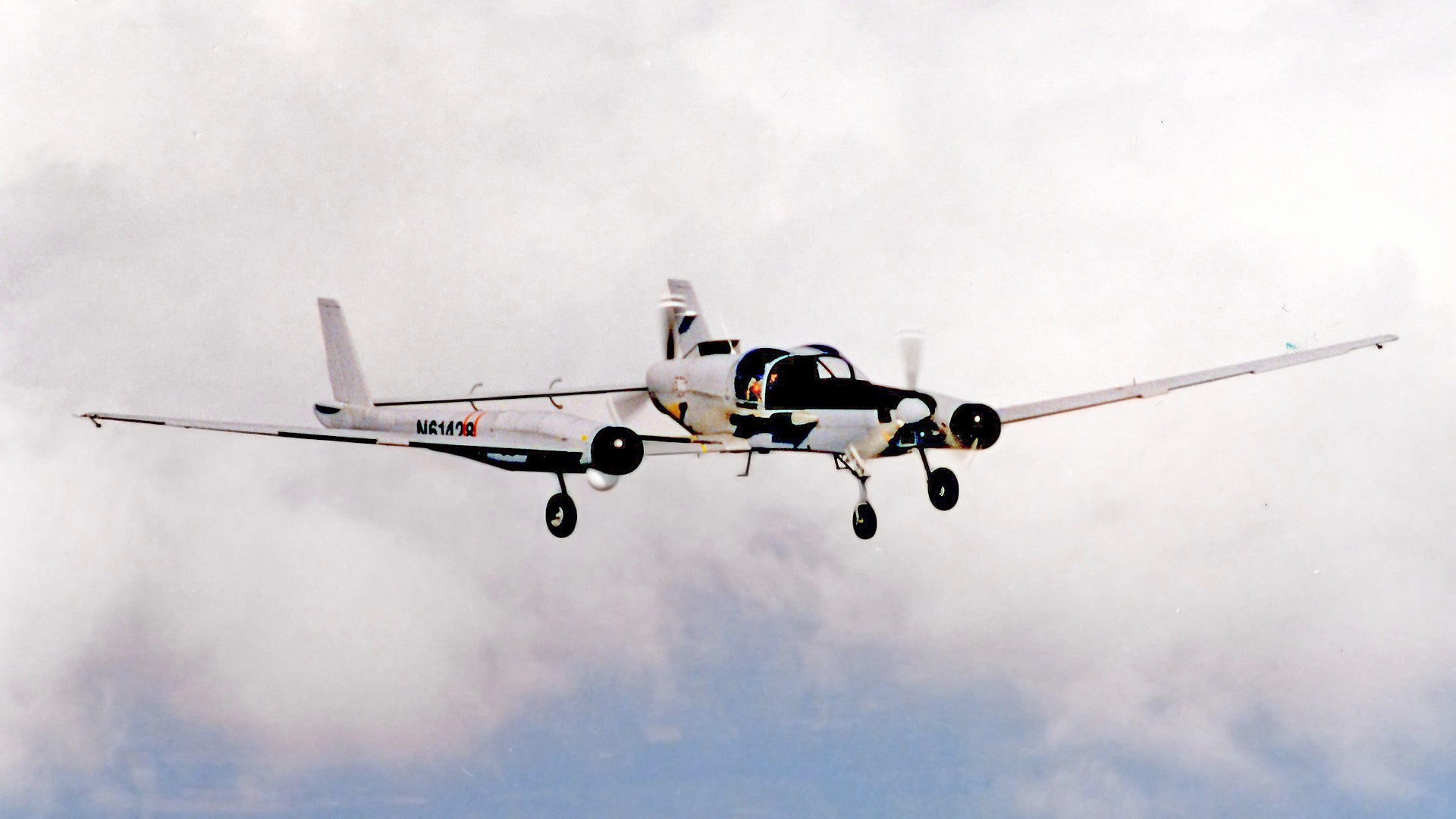When you think of U.S. military and stealth aircraft what probably springs to mind is the U.S. Air Force and planes such as the F-117 Nighthawk, F-22 Raptor, and B-2 Spirit. But low-observable technology isn’t limited just to cutting an aircraft’s radar signature and can involve other factors, such reducing aircraft’s infrared or visual profiles or cutting how much noise it makes in flight. As it turns out, the U.S. Coast Guard – which is technically a uniformed military service, despite not being part of the Department of Defense – has actually been a pretty serious operator of acoustically stealthy designs based on powered gliders, culminating in its most recent project, the Manned Covert Surveillance Aircraft (MCSA).
On July 30, 2013, Sikorsky Aviation completed the first MSCA prototype after years of delays and technical difficulties. The Department of Homeland Security’s (DHS) budget for the 2005 fiscal year had first spelled out this requirement for a “covert surveillance aircraft.”
We know very little about this aircraft, how many there are or were, what sort of sensors or other equipment it might have, or the status of the program in general at the time of writing. DHS’ original $8 million budget line item, which called for a joint project between Coast Guard and Customs and Border Protection, described the MCSA as a “medium to short range, fixed wing surveillance aircraft” with “the capability to operate quietly and surreptitiously enough to enable the surveillance, detection, classification and identification of a maritime target without the target’s inhabitants becoming aware of the aircraft’s presence.” Subsequent plans called for at least three aircraft, with the first flying at least 1,000 hours annually from the Coast Guard station in Miami, Florida.
We do know that Sikorsky put everything on hold between October 2012 and March 2013 as it tried to determine why there were “significant discrepancies” in both wings on the first prototype – a clue that it has a traditional layout – and moved the project as a whole from a plant in Elmira, New York to one in Fort Worth, Texas.
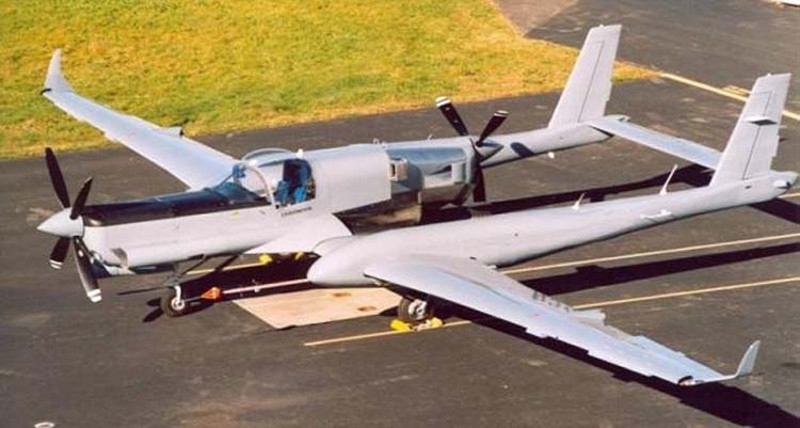
“Aeronautical analysis subsequently revealed that the non-conformed wings were safe to fly,” according to a historical note about the work of the U.S. Air Force’s 645th Aeronautical Systems Group, better known as Big Safari, for the 2013 fiscal year. “However, the ongoing technical issues and Sikorsky’s repeated failure to meet milestones led program managers to pursue options with Sikorsky, including termination,” the overview of Big Safari’s activities during the next fiscal year explained.

DHS, on behalf of the Coast Guard, had turned to the 645th to oversee the work. For decades, the Big Safari office has run numerous special aircraft projects, focusing primarily on spy planes, for American military and federal law enforcement customers and foreign allies. We obtained these historical entries via the Freedom of Information Act.
But despite this general lack of information, we actually have a pretty good idea of what Sikorsky’s design looks like. Since the Vietnam War, the U.S. military developed and fielded a number of these “quiet airplanes,” taking the inherent qualities of gliders and turning them into stealthy surveillance planes. The Coast Guard itself has flown some of these types, which seem offer many of the features outlined in the MCSA’s basic description.

Powered gliders over South Vietnam
The first requirement for such an aircraft came from U.S. Army commanders in South Vietnam, who wanted a way to snoop on Viet Cong insurgents and their North Vietnamese benefactors after dark. At the time, the service was limited to traditional fixed wing aircraft and helicopters for this job, both of which made sufficient noise as to alert enemy personnel on the ground that they were under surveillance. The subsequent classified Quiet Aircraft Program called for a plane that could persistently spy on targets below at night without giving away that it was there at all.
The Advanced Research Projects Agency (ARPA), now known as the Defense Advanced Research Projects Agency (DARPA), led the program, which involved personnel from both the U.S. Navy and Army. With a budget of $250,000, ARPA reached out to the Navy in order to quickly obtain a pair of unpowered Schweizer Aircraft Corporation SGS 2-32 gliders. These were situated at the U.S. Navy Test Pilot School to give students “experience with yaw-roll coupling,” according to a DARPA history.

ARPA then turned over the aircraft to Lockheed and its Skunk Works special projects office, who had already proposed a conversion of the powered version of the glider, known as the X-26, for the Army requirement. Skunk works is perhaps best known for developing larger spy planes like the U-2 Dragon Lady and the SR-71 Blackbird. The final product was known as the QT-2PC, with the last two letters standing for the project’s official nickname, Prize Crew.
“The major modifications included an acoustically insulated and muffled Volkswagen air-cooled engine, connected to a large, low-speed, high-efficiency propeller by a long line shaft, together with an up-to-date sensor suite,” according to the DARPA historical review. “Extensive use of radar-absorbing paints and other materials was also proposed to reduce radar signature.”
With the main focus being on reducing the aircraft’s noise, ARPA never followed through with the modifications to reduce the plane’s radar signature. The pair of QT-2PCs arrived in January 1968, just in time to be thrown into action in the aftermath of the Tet Offensive, tracking enemy movements at night using handheld “Starlight” image-enhancing scopes.

In April 1968, the Army sent the Prize Crew aircraft back to Lockheed for additional modifications based on this operational experience. “In particular, the tests had revealed the need for a quieter propeller, expanded view ports, and greater strength in the wing structure,” according to one annual Military Assistance Command, Vietnam (MACV) report.
The planes were back flying over South Vietnam two months later. They made such an impression that MACV issued its own contract for another 40 improved “quiet airplanes” or QT-3s, which it planned to distribute between the U.S. Air Force, Army, Navy, and Marine Corps throughout the country. These purchases never materialized. However, with the lessons it had learned from the Prize Crew program, Lockheed set to work on a revised design that, while still derived from the SGS 2-32, looked much more like a traditional aircraft.
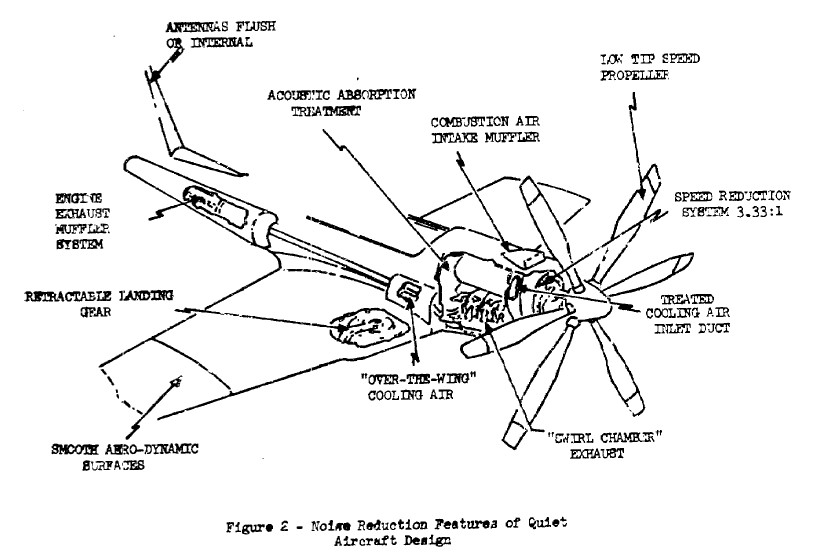
“The results led to design and construction of a new Lockheed surveillance aircraft, the YO-3A, which had new wing sections, new landing gear, a modified fuselage, and improved engine and drive system,” according to DARPA’s historical overview. “The sensor technology in the YO-3A was largely determined by lessons learned using the QT-2PC’s in Vietnam.”

The sensor upgrade was significant, replacing the hand-held optics with a turreted night vision camera, a precursor to the designs that are nearly ubiquitous today on surveillance aircraft, spy planes, and drones. YO-3As flew with three- and six-bladed propellers, with a slow-turning, variable pitch three-blade design being the most consistently quiet configuration, even during landing and takeoff, according to U.S. Air Force tests. On top of that, the planes had other noise reduction features, including a long exhaust system that cooled the gasses and then passed them through a muffler in the tail, as well as various other “acoustic absorption treatments.”
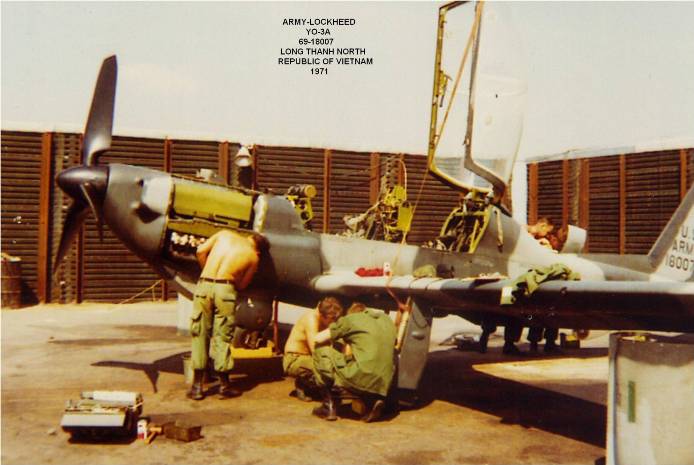
The company finished the design for these aircraft, also known as the “Quiet Star” or “Q/Star,” in 1969 and had the first prototypes ready for operations in Southeast Asia by the next year. The original Prize Crew powered gliders ultimately went back to the Navy Test Pilot School to resume their previous training role. Lockheed built a total of 11 YO-3As, all of which went to the Army. The service only lost one, but in an accident rather than to the enemy. With a cruising speed of just 80 miles per hour, the aircraft continued to gather valuable intelligence at night in South Vietnam until the United States formally ended its participation in the conflict in 1973.

Coast Guard takes the lead on “quiet aircraft”
After the end of the Vietnam War, the Army steadily retired the YO-3As, turning them over to agencies as varied as NASA, the Federal Bureau of Investigation (FBI), and the Louisiana Department of Fish and Game for research and law enforcement purposes. Still, the service never fully abandoned the idea and revived the concept in the 1980s as part of a new airborne surveillance program nicknamed Grisly Hunter.
This project was focused on developing a discreet aircraft to carry an improved, turreted electro-optical sensor system. The Army tested the proposed system on a variety of different planes, including twin-engine CASA 212 and four-engine De Havilland Canada DHC-7 light cargo aircraft, as well as the mysterious UV-23A and at least one test involving a Short C-23C Sherpa. In addition, they mounted the camera on yet another powered glider, the Schweizer 2-37A, designating the resulting aircraft the RG-8A. One of the prototypes crashed during tests in Arizona in 1986.
The Army ultimately chose DHC-7s with civilian-style paint jobs for what evolved into the Airborne Reconnaissance Low program, losing interest in the much stealthier RG-8A. Secretive activities in Latin America, especially American support to the government of El Salvador and Contra rebels in Nicaragua, appear to have been major drivers of the Grisly Hunter program, so there are reports that the Central Intelligence Agency subsequently operated some RG-8As or similarly modified 2-37 aircraft on covert operations. There are also reports that, as with the YO-3A, similar aircraft flew with agencies under the Department of Justice, possibly the FBI or DEA.
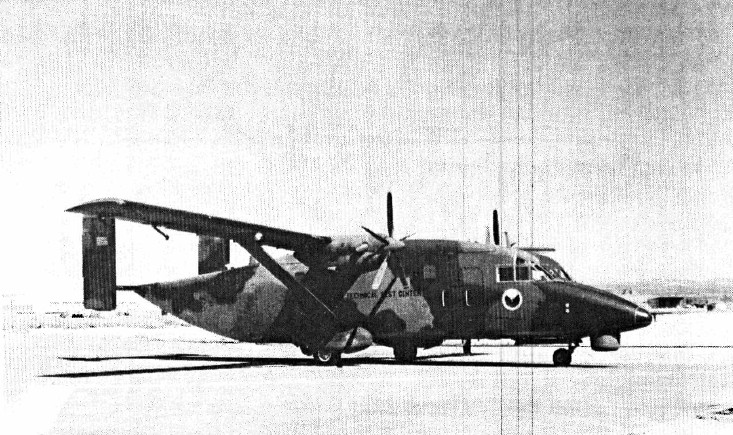

But this is also where the Coast Guard comes into the picture and things start sounding very familiar. With the War on Drugs in full swing, the service had the job of trying to intercept smugglers using small speed boats, popularly known as “go-fasts,” and light aircraft, generally at night. “They were transferred from the Air Force which developed the RG-8 after the Army, which originated the project, decided not to continue the aircraft’s development,” according to the Coast Guard’s own official history of the program. It “first took notice of the aircraft during a counter-narcotics program sponsored by … ‘Big Safari.’”
In 1988, the two “Condors” began flying missions from Coast Guard Air Station Miami, with planned sorties equivalent to 2,500 flights hours per year. With a cruise speed of approximately 115 miles per hour, each RG-8A could keep aloft for 8 hours while still covering a 500 mile range. After four years of operation, they had aided in saving 10 lives, helped seize almost 8,600 pounds of cocaine and approximately 19,000 pounds of marijuana, and steered other personnel to 21 smuggling vessels, leading to the conviction of 33 individuals for drug-related crimes. By that time, the aircraft were also flying off the coast New York State. The Coast Guard even put them to work spotting illegal fishing and oil dumping activities.
The Coast Guard was pleased with the planes, but wanted to expand their capabilities. The single-engine 2-37A was sensitive to the weather, unable to take-off in high winds and could be dangerous to ditch at sea if the motor gave out. The latter issue was a major concern, since the motors in the two planes had failed a number of times, though the pilots in each case had been able to make it back safely to base. An enlarged, more powerful design would also mean more range and greater payload capacity for improved or additional sensors.

An inglorious end?
In the early 1990s, Congress approved plans for a $450,000 program to convert the existing RG-8As into new, twin-engine aircraft, as well as build a third from spare parts. Schweizer would perform the work at its Elmira, New York facility. Unfortunately, the Air Force decided it was no longer interested in supporting the project and there appears to have been a falling out between the service and the Coast Guard over the entire affair. This is particularly apparent in a passive-aggressive message regarding the new plane’s official nomenclature.
For unknown reasons, the Coast Guard had already begun using the designation RU-38A and the nickname Twin Condor for the revised design, which featured a twin-boom tail and a pusher-puller engine configuration reminiscent of the Cessna O-2A observation plane. The Air Force, which is in charge of approving all new aircraft and missile designations, was incensed that the service had been using these without its consent.

On top of that, RU-38A moniker was wildly out of sequence with other utility aircraft in the “U” series. Though they ultimately approved the RU-38A designation, Air Force officials made the relatively petty decision not to make the Twin Condor name official and said they were putting the Coast Guard effectively “on notice” over the incident.
“Our records … indicate that the next ‘U’ designator available for assignment is 28 vice the request 38,” Air Force Major General John Handy, then head of the service’s Directorate of Programs and Evaluation, wrote in a 1995 memorandum. “However, the costs and manpower associated with changing the documentation to reflect a different number outweigh the benefits in this case. Unauthorized use of the RU-38A designator will be included on the metric prescribed by [Air Force Policy Directive] 16-4 for tracking compliance with … designator policy since the designator was used by the Coast Guard prior to approval.”
Despite this admonishment and without Air Force support, the Coast Guard pushed ahead with the conversion program. Schweizer ultimately only converted one of the RG-8As, with the other crashing in December 1995. It did also build the additional RU-38A from spares as planned, finish the program completely in 1997. The new aircraft had an AN/APN-215 weather radar in one of their tail booms, as well as a sensor turret with both day- and infrared cameras. Capable of longer flights, there was room for an additional crew member to help with increased pilot fatigue, too.
Unfortunately, though we don’t know why, the Coast Guard decided in 2000 that the RU-38A did not meet the mission requirements. The fate of both planes is unclear, but it is entirely possible that they served as the basis for the new MCSAs. In 2004, none other than Sikorsky bought Schweizer and its Elmira, New York site. This is undoubtedly the same location in Elmira where it designed and built the MCSA prototype before moving that program to Texas in 2012. Schweizer had never given up the quiet aircraft concept, either, having delivered modified 2-37Bs to the Colombian and Mexican Air Forces, in the late 1990s. These were single-engine planes visually similar to the RG-8A, which the Colombians dubbed “Vampiros,” or vampires.

The company did design a further improved “RU-38B” aircraft, as well, reportedly delivering two the U.S. Department of Justice between 2004 and 2005. This new variant had two Rolls Royce Allison 250-B17F turboprops, which greatly improved the aircraft’s overall performance. The aircraft had a modular payload bay, able to accept palletized sensor packages weighing up to 800 pounds. According to the manufacturer, the B model could quietly cruise over a target area on just one propeller running at an especially low 1000 revolutions per minute.
The final MCSA design may have leveraged some or all of these developments, or simply used the basic concept as a jumping off point. There have been significant advancements in lightweight composite airframes, efficient multi-blade propellers, and small engines since the Coast Guard and Schweizer first conceived of the Twin Condor.
All in all, it seems safe to say that the Coast Guard’s MCSA was or is related in some way to these earlier designs. If you have any additional information, or pictures of the prototype or prototypes, please feel free to let us know in the comments or an Email.
Contact the author: joe@thedrive.com
